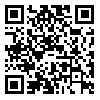BibTeX | RIS | EndNote | Medlars | ProCite | Reference Manager | RefWorks
Send citation to:
URL: http://jdm.tums.ac.ir/article-1-80-en.html
Background and Aims: Accurate bone measurements are essential for determining the optimal size and length of proposed implants. The radiologist should be aware of the head position effects on image dimensions in each imaging technique. The purpose of this study was to evaluate the effect of mandibular plane angle on image dimensions in linear tomography.
Materials and Methods: In this in vitro study, the vertical dimensions of linear tomograms taken from 3 dry mandibles in different posteroantenior or mediolateral tilts were compared with actual condition. In order to evaluate the effects of head position in linear tomography, 16 series of images while mandibular plane angle was tilted with 5, 10, 15 and 20 degrees in anterior, posterior, medial, or lateral angulations as well as a series of standard images without any tilt in mandibular position were taken. Vertical distances between the alveolar crest and the superior border of the inferior alveolar canal were measured in posterior mandible and the vertical distances between the alveolar crest and inferior rim were measured in anterior mandible in 12 sites of tomograms. Each bone was then sectioned through the places marked with a radiopaque object. The radiographic values were compared with the real conditions. Repeat measure ANOVA was used to analyze the data.
Results: The findings of this study showed that there was significant statistical difference between standard position and 15º posteroanterior tilt (P<0.001). Also there was significant statistical difference between standard position and 10º lateral tilt (P<0.008), 15º tilt (P<0.001), and 20º upward tilt (P<0.001). In standard mandibular position with no tilt, the mean exact error was the same in all regions (0.22±0.19 mm) except the premolar region which the mean exact error was calculated as 0.44±0.19 mm. The most mean exact error among various postroanterior tilts was seen in 20º lower tilt in the canine region (1±0.88 mm) and for various mediolateral tilts the most exact error was seen in the canine region in 20º upper tilt (2.9±2 mm).
Conclusion: The mean exact errors in various regions and various 5º to 20º posteroanterior and mediolateral mandibular tilts were in the range of acceptable values (≤1 mm) except for the canine region. However, this effect is more considerable in mediolateral tilt compared with posteroanterior tilt, posterior region compared with anterior region, and upper tilt compared with lower tilt.
Received: 2010/07/11 | Accepted: 2011/03/2 | Published: 2013/09/21
| Rights and Permissions | |
 |
This work is licensed under a Creative Commons Attribution-NonCommercial 4.0 International License. |




